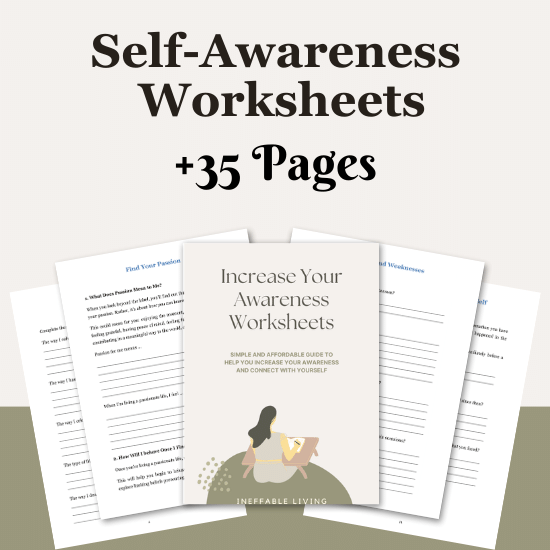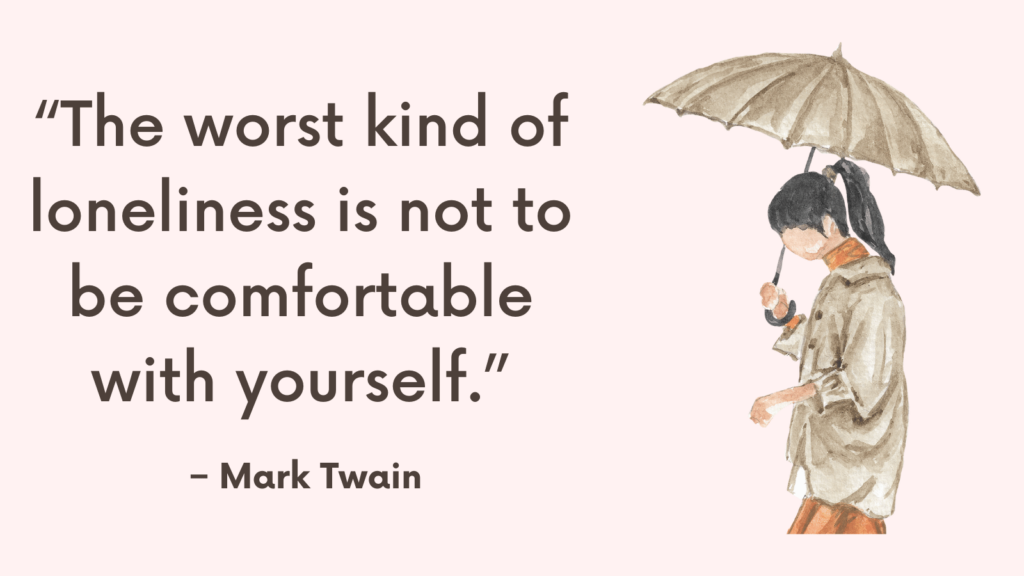In this post, you’re going to learn what it means to be emotionally available and how to become more emotionally available.
What Does It Mean To Be Emotionally Available?
Being emotionally available refers to the capacity to be present, attuned, and responsive to one’s own emotions and the emotions of others.
Emotional availability encompasses the ability to engage in authentic and meaningful emotional connections within relationships. Here are the key components of emotional availability:
1. Self-Awareness: Emotional availability begins with a deep understanding of one’s own emotions, needs, and triggers. It involves the ability to recognize and express one’s feelings in a healthy and constructive manner.
2. Open Communication: Emotionally available individuals are able to engage in open and honest communication about their feelings and experiences. They are willing to share their emotions and actively listen to the emotions expressed by others.
3. Empathy and Understanding: Emotional availability includes the capacity for empathy and understanding towards the emotions of others. This involves being attuned to and validating the feelings of those around you.
4. Responsiveness: Emotionally available individuals are able to respond to the emotional needs of others in a supportive and empathetic manner. They demonstrate a willingness to engage with and support the emotional experiences of those they care about.
5. Emotional Regulation: Emotional availability encompasses the ability to regulate one’s own emotions effectively, managing intense feelings in a healthy way. This allows for thoughtful and considerate responses in interpersonal interactions.
6. Vulnerability and Intimacy: Emotionally available individuals are comfortable with vulnerability and are able to foster emotional intimacy within their relationships. They are open to authentic emotional connections and create a safe space for others to share their feelings.
7. Trust and Security: Building trust and creating a sense of emotional security within relationships are integral components of emotional availability. This involves demonstrating reliability, consistency, and integrity in emotional interactions.
It is important to recognize that emotional availability is not a static trait but rather a dynamic aspect of human interaction that can fluctuate based on internal and external factors.
Related: Best 10 Books On Emotional Unavailability
What Causes Emotional Unavailability?
Emotional unavailability can stem from a variety of complex factors, encompassing both internal psychological dynamics and external influences.
1. Attachment Patterns
Early experiences and attachment patterns established in childhood can significantly impact emotional availability in adulthood.
Individuals with ambivalent, avoidant, or disorganized attachment styles may struggle to engage emotionally in relationships, as they may have learned to suppress their emotions or develop defenses against vulnerability due to early relational challenges.
2. Past Trauma
Experiencing trauma, whether it be from abuse, neglect, or significant loss, can profoundly affect one’s ability to be emotionally available.
Unresolved trauma can lead to emotional numbing, hypervigilance, or difficulties trusting others, creating barriers to forming intimate connections and expressing emotions openly.
3. Fear of Vulnerability
Some individuals may fear being emotionally vulnerable due to concerns about rejection, abandonment, or being hurt.
This fear can lead to emotional withdrawal and a reluctance to engage in deep emotional intimacy, as a protective mechanism to avoid potential emotional pain.
Related: Emotionally Unavailable Husband Quiz
4. Communication Patterns
Inadequate communication skills or a lack of exposure to healthy emotional expression within one’s family or social environment can contribute to emotional unavailability.
If individuals have not learned how to identify and articulate their emotions effectively, they may struggle to engage emotionally in relationships.
5. Personal Stressors
External stressors such as work pressure, financial difficulties, or health concerns can consume one’s emotional bandwidth, leaving little capacity for emotional engagement in relationships.
The burden of stress can restrict individuals from being emotionally present and responsive to the needs of others.
6. Mental Health Challenges
Conditions such as depression, anxiety, or substance abuse can hinder emotional availability.
These struggles can monopolize an individual’s emotional energy and distort their perception of reality, making it challenging to connect with others in a meaningful and emotionally open manner.
Related: Am I Emotionally Unavailable Quiz
7. Relationship History
Previous experiences of betrayal, heartbreak, or dysfunctional relationships can impact one’s willingness to be emotionally available in new relationships.
Lingering trust issues or emotional scars from past relational trauma can pose barriers to forming emotional connections with others.
8. Cultural and Social Norms
Societal expectations, gender roles, and cultural norms can influence how emotions are expressed and received.
In cultures or environments where emotional openness is discouraged or stigmatized, individuals may internalize these messages and struggle to be emotionally available.
It is important to recognize that emotional unavailability is not solely determined by internal factors; it can also be influenced by relational dynamics and contextual factors within one’s environment.
How to Become Emotionally Available?
Developing emotional availability involves a process of self-reflection, introspection, and intentional efforts to cultivate emotional awareness and responsiveness. Here are some strategies to promote emotional availability in relationships:
1. Enhance Self-Awareness
Begin by exploring your own emotions and inner experiences.
Engaging in practices such as journaling, mindfulness, or therapy can deepen your understanding of your emotional landscape.
Recognizing and acknowledging your own emotional patterns and triggers is the first step towards becoming more emotionally available.
2. Practice Active Listening
Cultivate the habit of attentive and non-judgmental listening when others share their feelings.
Reflective listening, where you paraphrase and validate the speaker’s emotions, demonstrates your attentiveness and empathetic engagement.
By actively listening to others, you create an environment that encourages emotional expression and connection.
Related: How To Stop Being Emotionally Unavailable? Top 7 Strategies
3. Validate Emotions
Offer validation and support to those around you by acknowledging the legitimacy of their feelings.
Expressing empathy and understanding communicates that their emotions are respected and appreciated, strengthening the emotional bond within the relationship.
Validating the emotions of others fosters trust and openness, creating a safe space for emotional connection.
4. Communicate Openly
Create opportunities for open and honest communication, where both parties feel comfortable expressing their thoughts and emotions.
Establishing a safe space for sharing feelings fosters trust and emotional intimacy.
Encourage meaningful conversations that allow for the authentic expression of emotions and thoughts.
Related: Best 35 Journal Prompts To Get To Know Yourself
5. Engage in Conflict Resolution
Approach conflicts with a collaborative and respectful mindset, focusing on finding mutually satisfactory solutions.
Constructive conflict resolution promotes emotional connection and reinforces the stability of the relationship.
Learning to navigate conflicts in a healthy manner strengthens the emotional bond between individuals.
6. Prioritize Quality Time
Invest in shared experiences and quality time with loved ones, as these moments create opportunities for emotional connection and bonding.
Engaging in meaningful activities and conversations strengthens the emotional fabric of the relationship, fostering a sense of emotional closeness and intimacy.
7. Cultivate Empathy
Develop your capacity for empathy by actively considering the perspectives and emotions of others.
Practicing empathy allows you to connect with others on a deeper emotional level and fosters a supportive and nurturing environment within relationships.
Related: Best 10 Self Discovery Books
8. Self-Reflection and Emotional Regulation
Take the time to reflect on your emotional responses and consider how they impact your interactions with others.
Developing emotional regulation skills enables you to manage intense emotions effectively, allowing for more thoughtful and considered responses in your relationships.
9. Address Personal Barriers
Identify and address any personal barriers or past experiences that may be hindering your emotional availability.
This may involve seeking support from a therapist or counselor to work through unresolved emotions, trauma, or attachment-related difficulties.
10. Foster Trust
Building trust within relationships is essential for emotional availability.
Demonstrate reliability, integrity, and consistency in your interactions to nurture a secure and trusting environment where emotional openness can flourish.
Related: Top 23 Journal Prompts For Self Growth

Conclusion
The journey towards emotional availability is ongoing and may require patience and self-compassion.
Embracing vulnerability and openness within relationships can lead to deeper emotional connections and a greater sense of fulfillment and intimacy.



